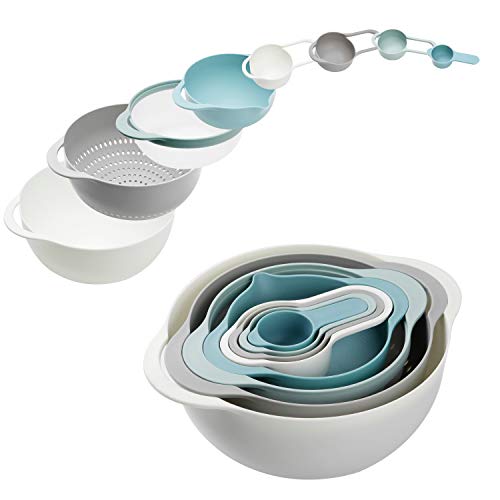
Even clear glass vintage Pyrex mixing bowls can be very high in ARSENIC – check out this example! Vintage wooden bowls can have high-lead stains, sealants, varnish or clear coats.
Avoid vintage (all of the vintage!) Many vintage bowls are made with brightly colored Lead painted exteriors – or high-Lead ceramics and glazes. YES there are a lot of items that have Lead in them (including vintage and new mixing bowls) BUT for every category of items that has Lead there is almost always a selection of Lead-free (and otherwise toxicant free) choices if you stick to a few simple guidelines (regardless of which actual options you choose to buy.) This link will take you to the “Mixing Bowl” category of posts on the website – where you can see all of the Mixing Bowls I have tested and reported on here at. Earlier in 2021 I also created the website (which is linked in the header on every page of this main website) with safer choices for products in many of the categories that I most often get questions about. I write these product recommendation ( #SaferChoices) posts in response to other posts on this site that share similar items that test positive for high levels of Lead (or other toxic heavy metals) – so readers here have a little hope for moving forward in what otherwise might seem like a fairly toxic world. To make your life a little easier – and in response to unrelenting requests from my readership, I started sharing product recommendations in December of 2016. “Well Tamara, can you share some Lead-free alternatives?” You can read more about the specifics of the concern on this link. My overall argument (as a mother of Lead poisoned children – including one child who has a permanent brain injury as a result of being acutely Lead poisoned as an infant) is that Lead is one of the most potent neurotoxins known to man and has no place in our kitchens, even in trace amounts (regardless of what any relevant federal regulatory standards and limits are for toxicants in these specific types of products). 
Why is the issue of “Lead in cookware” a problem? Since I have children in my home and since my children cook with me and eat food prepared in my cookware and served on my dishes – I try to choose only 100% Lead-free options for my own kitchen. That said, dishware and kitchenware is not regulated in the same way (they are not considered to be items intended for children even though children may use these items daily in their normal life) and therefore even modern kitchenware can LEGALLY(!) test positive for Lead (using XRF technology) in the many hundreds of parts per million range to 10,000 ppm or sometimes even higher.

The level of lead that is considered safe for an item intended for children is anything UNDER 90 ppm Lead in the paint, glaze or coating of that item.

How much Lead is too much Lead in cookware? Cadmium is most often found in Red, Purple, Orange and Yellow enamels and glazes, while Lead can be found in any color glaze – from white to black to fuchsia! Highly decorated and colorful kitchenware may also test positive for high levels of Cadmium and Arsenic among other heavy metals. Unfortunately many new pieces will also have Lead at high levels, especially if they are ceramic or enamel coated in any way.
#Are glass or stainless steel mixing bowls better how to#
Updated: Decem– Saturday How to choose a safer mixing bowlĪs many of Lead Safe Mama friends and readers know already most of the vintage dishware and kitchenware I have tested (and written about on this website) has tested positive for Lead (and sometimes also Cadmium and Arsenic) when testing the items with an XRF instrument.







 0 kommentar(er)
0 kommentar(er)
